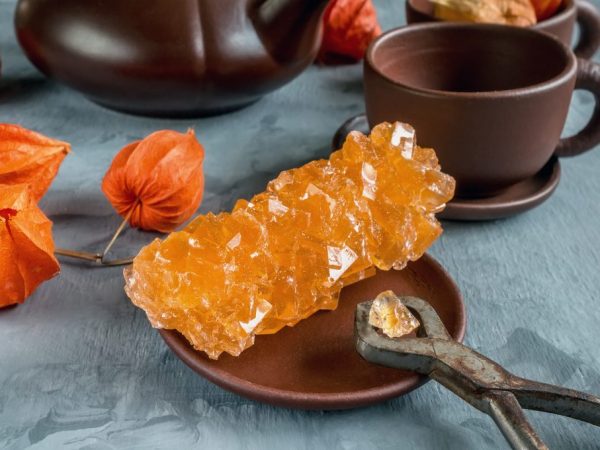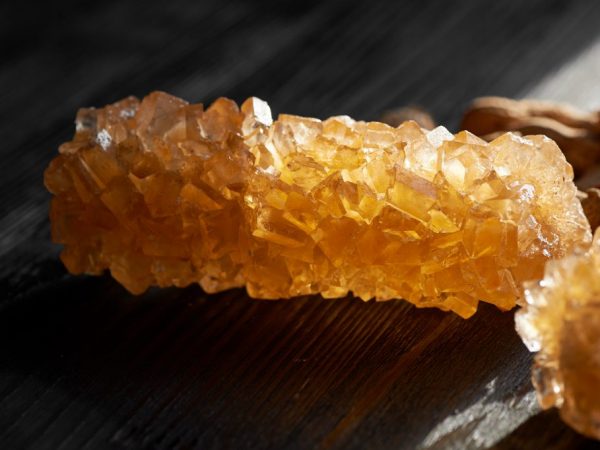Features and uses of grape sugar
Many plant products contain sugary compounds. One of the most famous is grape sugar, which is an integral part of the fruit of the fruit vine. It is actively used in the food industry due to its many beneficial properties.

Features and uses of grape sugar
Characteristics of grape sugar
Natural product - grape sugar - is obtained as a result of filtration. In the industry, berry juice is thickened using a special centrifuge. The resulting product is passed through porous diatomaceous earth to be filtered.
In this way, dirt, accidentally trapped microorganisms from the surface of the berries are removed. A refractometer device measures the sugar content of a liquid to determine if it meets the standards.
Filtration
The filtration is repeated at least 3 times without heating or other physical impact on the liquid. Such an effect does not violate the cellular and atomic bonds between the elements of the juice from grapes, and the preserved integral structure is more easily and quickly absorbed by the human digestive system.
The retention of all the beneficial elements is also equally important when evaluating a monosaccharide. Particularly valuable components are bioactive substances, for example, the natural antioxidant flavonol quercetin. No synthetic additives are used in the production of this substance. This is confirmed by laboratory tests and measurements.
Grape sugar is a colorless thick liquid that does not have a pronounced odor. Its taste is not as strong as that of the usual refined sugar, the sweetness is felt weaker by about a third. It is produced more often in a small glass or plastic container with a dispenser. It is better to use the contents of the bottle within 90 days, provided it is stored in the refrigerator. Liquid grape sugar in sealed containers is stored for 1.5 years.
Manufacturers also sell glucose as a fine white powder that resembles flour or powdered sugar. This crystalline effect is obtained when the liquid is dried. As such, grape sugar is called glucose, glucose powder, or monosaccharide. It has the same properties as its liquid counterpart, just presented in a different form.
The fact that for the first time glucose was obtained from the berry juice of the fruit of grapes, reinforced the name "grape sugar". The combination of glucose and fructose in any product creates the usual refined sugar. Thus, grape sugar is one of the constituents of the sweeter substance.
Chemical composition and calorie content
The product contains only grape juice. It contains glucose, stripped of fructose and sucrose.
The monosaccharide from the juice also lacks yeast bacteria, genetically modified products. The benefits and harms of grape sugar are determined by the chemical composition.
The substance is characterized by a high content of vitamins and minerals. The main constituent units are vitamins of group B (B1, B2, B5, B6, B9), C, PP and H. Among the useful chemical elements are phosphorus, zinc, sodium, copper, iron, potassium, folic acid. All of them are presented in their primary form, with an integral structure, and therefore have the greatest usefulness for the human body. The formula of glucose as a chemical element looks like this - C6H12O6.
Grape sugar has a good calorie content, which is 260 kcal per 100 g of product. Energy value - 1088 kJ, which indicates a good energy return by the substance. The glucose level in 100 g reaches 66.4 mg. Monosaccharide does not include proteins and fats, but the carbohydrate level is 65 mg per 100 g of product.
Positive and negative properties

Glucose boosts mood
The monosaccharide has a definite effect on the human body. It is not a remedy, but it has many benefits. The main characteristic of the product is its hypoallergenicity.
Useful properties of glucose:
- it is used as an intravenous food for critically ill patients;
- its use improves mood, helps to restore balance after psychological trauma and shock;
- in conjunction with proteins, it reunites the physical state of the muscles after physical exertion;
- it is a source of energy for the whole organism, with its help it is possible to increase and maintain activity and efficiency;
- juice product improves thought processes, promotes the process of memorization and study;
- compounds of elements in the composition of the substance accelerate the work of the digestive system.
The substance can also bring harm to the one who uses it. Glucose, along with sucrose, negatively affects tooth enamel, provoking the multiplication of microbes on its surface. With prolonged exposure to pathological microorganisms, the enamel is destroyed, this leads to caries and more serious dental problems.
People who are overly addicted to diets find that less sweet glucose powder contains fewer calories. This misconception forces you to increase the amount of this substance in food, which increases the number of calories. A large amount of carbohydrates causes fermentation processes, which leads to flatulence, colic and other unpleasant sensations in the abdomen.
Excessive use of the substance from the berries of the vine for both adults and children has unpleasant consequences. Often large portions of glucose lead to the development of fungal diseases, diarrhea, decreased immunity, complications of kidney and heart diseases, and slowing down of the healing processes on the skin surface. Such unpleasant symptoms can also cause more complex diseases: cancer, damage to the retina, and organ inflammation.
The human body, especially for children, quickly absorbs glucose elements and does not remove excess.
Uses of grape sugar
More often glucose acts as a sweetener or refined sugar substitute, performs its key function.
There are also other ways to use it:
- The low level of sweetness allows the addition of grape sugar to baby food. This allows you to gradually accustom your child to sweet foods without exceeding the amount of carbohydrates and retaining all the useful elements. The harm from fruit purees and juices with added glucose is minimal if the child is not predisposed to allergic reactions to grapes.
- To enhance the taste, glucose powder is also added to sports nutrition. This component successfully maintains muscle tone. The activity and energy gained from it also helps in maintaining physical fitness.
- In medicine, glucose is administered intravenously to patients to maintain good health or to provide them with nutrients.To relieve the shock state, injections are given with glucose, which must enter the bloodstream. This product forms the basis for the creation of ascorbic acid.
- Other industrial products actively use the monosaccharide for their own purposes. In brewing, glucose helps support the fermentation process. In the textile industry, it is used as a reducing agent.
- Sugar from grape juice is added as a substitute for refined sugar and in home cooking. It copes with the role of a sweetener in fruit salads, desserts, baked goods, cold and hot drinks, it is a good solution in cooking, as it retains the original taste of products without clogging them with sweetness or additional aftertaste.
Conclusion
Grape sugar and natural fructose are present in grape fruits. Using a monosaccharide as a food supplement is a good alternative to refined sugar. It is important to consider the dosage, especially for people with health problems and children. A natural product made from vine juice has many positive features, since it is a concentrated source of useful vitamins and minerals.


